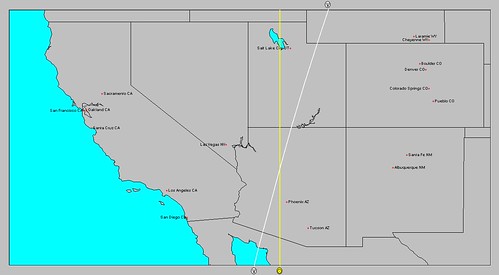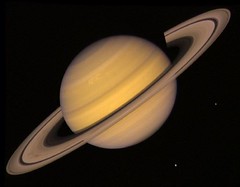
On June 3rd, Mercury will square Neptune. The square or 90 degree aspect is a storm-breeding relationship between two planets. On the same day, Neptune will begin its retrograde motion. This means that from our viewpoint on earth, Neptune will appear to move backwards in the heavens. The retrograde motion of Neptune has been observed to coincide with excessive humidity and abundant moisture.
Key charts used in making astro-meteorological forecasts show the influence of Mercury and Neptune over the western U.S., the Baja Peninsula, and the area around Guadalajara, Mexico. The above astro-locality map shows the area in and around Arizona to be particularly affected by Neptune's pluvial influence. In my experience, the effects of a retrograde planet build up over the days after it begins its retrograde motion. I think the period between June 3rd and 7th should show that the above mentioned areas will receive an influx of moisture due to low pressure systems or fronts. The Guadalajara area and the Baja could see a tropical system affecting them since the eastern Pacific is now in hurricane season or it could be some other type of severe weather pattern. The Arizona area may see an increased monsoonal flow triggering abundant moisture at this time.

On June 12th, Saturn will also change its apparent motion after about 4 1/2 months of its backward boogie. Saturn will now appear to move forward in the heavens. This change of motion has been observed to correspond to cold and damp conditions. When coupled with the Sun's conjunction to Mercury on the same day, which can excite windy conditions, these can all work together to bring noticeable weather patterns.
Astro-locality maps draw our attention to a number of places. One place where the Sun, Mercury, and Saturn join forces is in and around the Texas and Oklahoma panhandles up through Nebraska. One possibility is that a strong low pressure system is ejected out of the Rockies into the central Plains bringing severe weather in eastward transit to the Mississippi Valley area. Our time frame is roughly between the 12th and the 16th.
Another area that might be worth watching from around the 10th through the 14th is the Gulf of Mexico. The area just north of the Yucatan Peninsula (around 89W/23N) over to western Cuba and northward to the Central Gulf Coast may show signs of tropical activity.
Neptune and Rockies Flood Potential
Hurricane Season 2011 Baja, Mexico
Hurricane Risk-Management
Hurricane Season 2011 Predictions
Overview of UK Winter 2012-13
The Winters of 2011-14
Cyclone Yasi fulfills long-range prediction!
Tropical Storm Matthew Fulfills Long-range Forecast!
Hurricane Earl and T.D. 10E Fulfill Long-range Forecasts!
Tropical Storm Alex Fulfills Long-range Prediction!
Bonnie Fulfills Long-range Forecast!
Introduction to the Weather Alternative
How Long-Range Forecasts Are Made
Excerpts from Tidal Dynamics by Fergus J. Wood
Alister McGrath on Science and the New Atheism
No comments:
Post a Comment